Did you know that black dogs are harder to home than any other colour?
It’s a sad stigma that is supported by research by many welfare organisations.
October 1st is National Black Dog Day and was founded by Colleen Paige, an American pet expert who wanted to highlight the joy black dogs can bring to our lives.
To mark it we’re looking at the reasons why black dogs are rejected and what people can do to help.
Campaigners say because of the colour of their fur, black dogs don’t show up as well in kennels and people are more likely to walk past them.
Online, their photos aren’t as popular and it’s thought that to photograph them well it takes more time and special lighting – something many shelters don’t have.
Myths and folklore going back to the 12th century also means black dogs and cats had negative connotations and Winston Churchill famously described depression as ‘The Black Dog.’
There’s also a view that black dogs aren’t distinctive – whereas lighter coloured ones are making them more individual, quirky and appealing.
Dr Roger Mugford of The Company of Animals says: “The problem is absolutely with society and our perception of these animals and we’ve got to change it.”
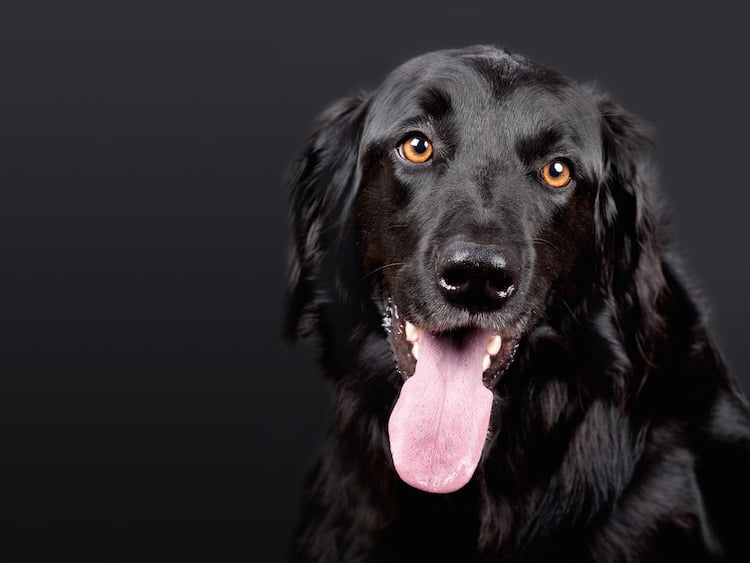
Jo Blake from the Greyhound Trust agrees
Nationwide, 80 per cent of retired greyhounds looking for homes are black.
Jo, Operations and Welfare manager at the Greyhound Trust said: “Any animal rehoming organisation does report that black dogs tend to be the hardest to rehome and it affects cats as well.
“There are lots of issues and superstitions around black animals.”
In British folklore dating back as early as 1127, black dogs were often associated with the Devil, described as ‘hellhounds’ and portrayed as eerie, terrifying creatures, often ghosts.
They’d appear in frightening places such as cemeteries or gallows, in violent storms or before scenes of tragedy and untimely death.
There are so many legends from all over the world about black dogs, some negative, but some positive, depicting them as protective, benevolent creatures.
While myths and legends don’t usually feature in our decision making today, dark coated animals are still struggling.
Cats Protection say it takes 22 per cent longer to rehome a black cat than other coloured ones
The charity encourages adopters to look at the cat’s personality traits and how they fit in their lifestyle rather than their colour.
At Battersea, the average dog takes 35 days to find a home, but black dogs take 40.
Centre manager Robert Young says it might be because they’re harder to photograph and aren’t as popular on social media sites like Instagram.
He said: “People love putting pictures of their pets on social media and it’s no secret that black animals can be tricky to photograph. It can be hard to distinguish their features on camera – and it does take a bit of practice to get the perfect snap.
“This has led to a misconception that black animals aren’t as ‘pretty’ or ‘cute’ as others. But we know from experience that our black dogs and cats are just as loving, adorable and cuddly as their white, brindle and brown friends.”
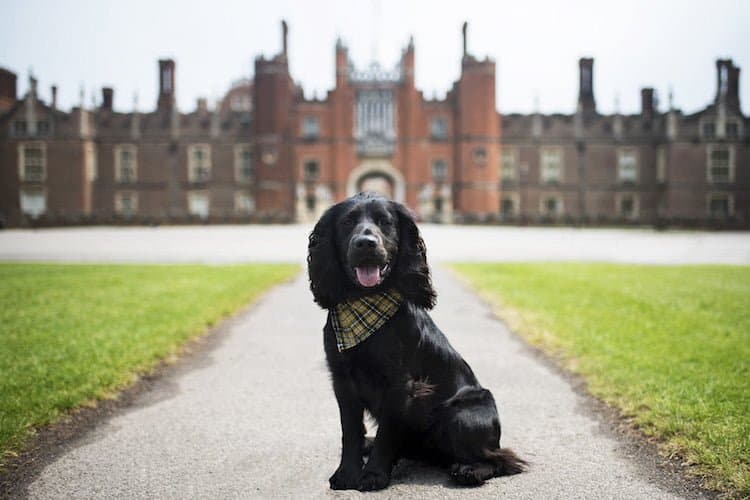
Joanna Baker is providing shelter dogs with accessories in a bid to help them
She runs the Collar Club and was so concerned about their plight she decided to set up an initiative to give them vibrant collars and accessories.
Her monthly subscription box service provides ethical toys made from recycled or natural materials, and dog treats that are 100% natural. (You can read Dotty4Paws review www.dotty4paws.co.uk/
A percentage from the sale of each box goes towards making collars and bandanas which she gives to her local animal shelter, Leicester Animal Aid.
Joanna is set to donate 20 collars and bandanas which she hopes will make the dogs look appealing and help them find new homes.
She said: “We wanted to contribute to our local shelters in a way that benefitted the dogs directly.
“By providing colourful collars we hoped that we could help long term residents stand out amongst the pack as humans are subconsciously drawn to dogs with identifiable features as it helps us to imagine what their character will be like.
“We were also advised by the shelter that bandanas are a great help as they provide a surface that can be used to apply calming remedies for dogs that are anxious in a kennel environment.”
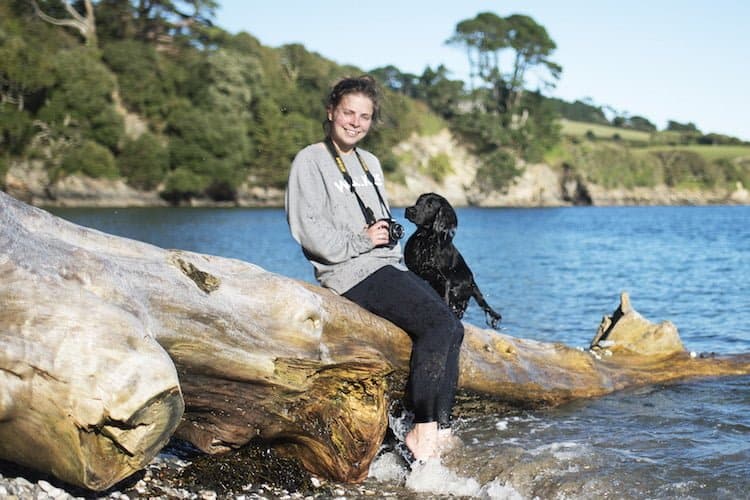
Hattie Day from The Cornish Dog proves a black dog can look cute in photos
The professional photographer and blogger’s adorable Cocker Spaniel Woody attracts thousands of fans to their blog The Cornish Dog and Instagram page every day.
Hattie said: “It’s heartbreaking that dogs stay in shelters because of the colour of their fur and I hope Woody’s photos show that black dogs are just as photogenic.”
Vet Pete Wedderburn AKA Pete The Vet agrees and urges potential adopters to give black dogs a chance.
He said: “Beneath that dark outer layer, black dogs and cats are just the same as other pets. When you next go looking for a rescue pet, remember that in pets, as in humans, colour is only skin deep.”
We all love sharing photos of our pets online, and if you’re reading and are considering rescuing a black dog, Hattie has kindly shared her tips on how to photograph them.
1. Shoot in a Familiar Environment
It’s important to feel relaxed when photographing your dog. Our pets pick up on our emotions and you want to make sure the photo shoot is a positive experience for everyone.
Woody can be unpredictable in new places and all he wants to do is run around and explore, so I choose to shoot at one of our favourite beaches or walks.
I feel more confident shooting in a familiar environment, I know the nearby hazards and Woody is less likely to spontaneously sprint off.
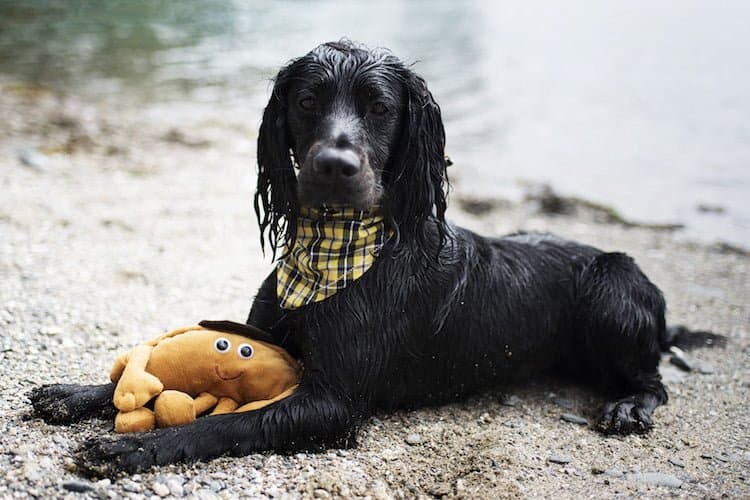
2. Bring Plenty of Treats
Your dog may not understand what a camera is, or why they have to sit while it makes loud clicking noises. Be sure to give your dog plenty of treats, whether that’s food, toys or general fuss.
Photographing your dog is a positive experience after all, so be sure to reward your furry friend throughout! Praise them between shots for being a good boy or girl.
I also use toys and treats to help direct Woody’s eyes in an image, as he is easily fixated by his favourite rewards.
Simply hold them up where you want your dog to look, click the shutter and give your dog their reward!
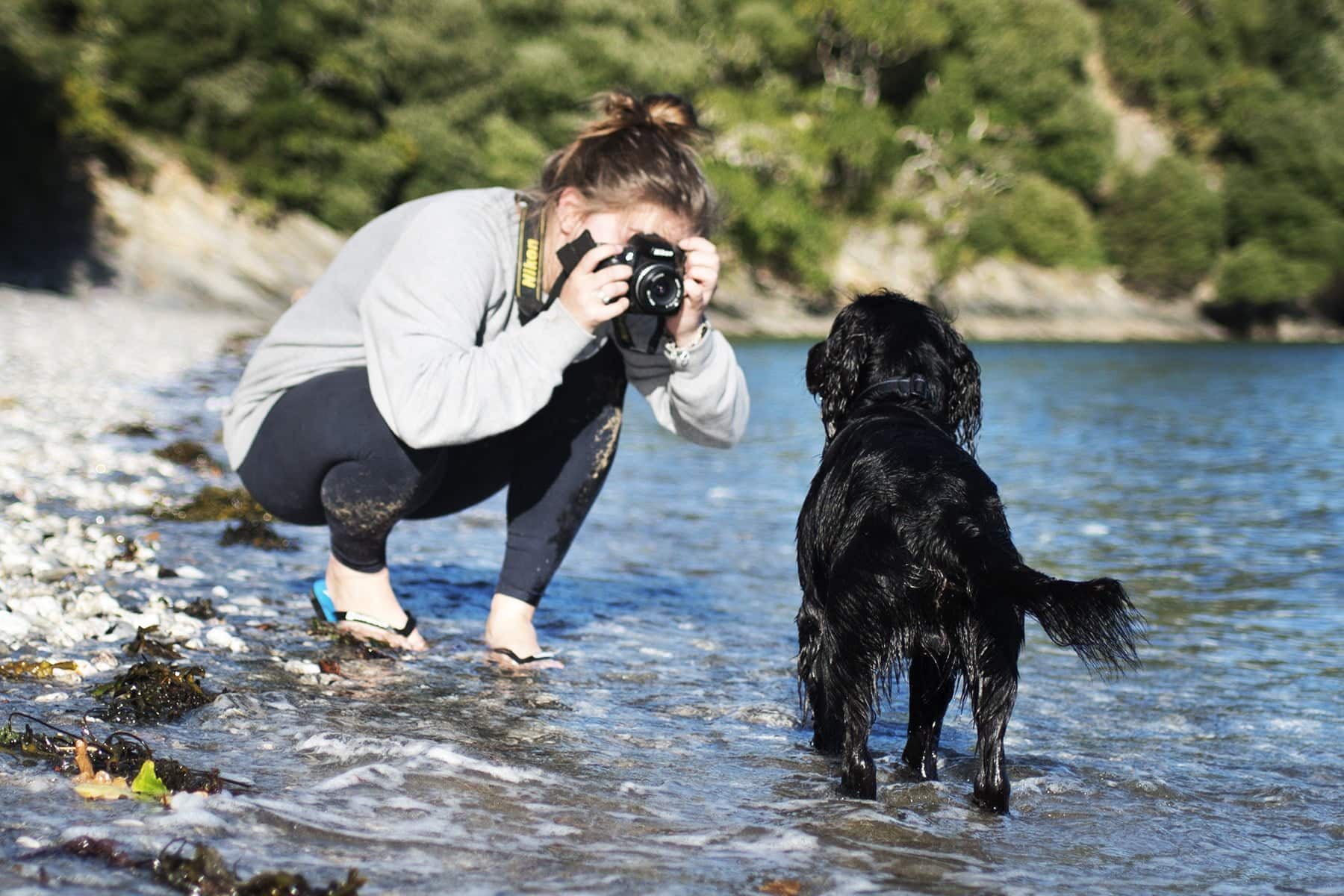
3. Get down to Your Dog’s Level
Explore different angles by shooting from above or getting down to your dog’s level. You’ll uncover unique perspectives, which make for more interesting photographs.
If you can’t bend down to your dog’s height, why not photograph them sitting on a nearby rock or tree? Experiment with different compositions too.
Try photographing your dog from the front, behind, up close and into the distance.
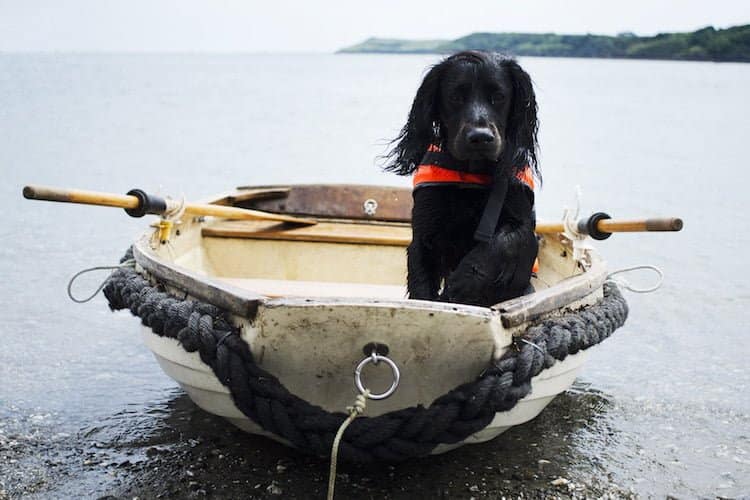
4. Shoot in Natural Light
Woody is a black working cocker spaniel. Whenever I’m photographing him, it’s important we pick the right time and light. I shoot almost exclusively in natural light 95% of the time.
I also favour overcast days, as the sun can make Woody’s coat super shiny and over-exposed in photos. We tend to avoid evenings, as Woody blends in to the shadows easily.

5. Join Your Dog in Front of the Lens
As a photographer, the unique bond between humans and their dogs fascinates me. I regularly join Woody in front of the lens and love posing for photographs with him.
I felt nervous and uncomfortable posing with my dog in public at first but the more I practice, the easier it becomes!
Letting Woody take the lead definitely helps and is a great way of capturing our special relationship forever.
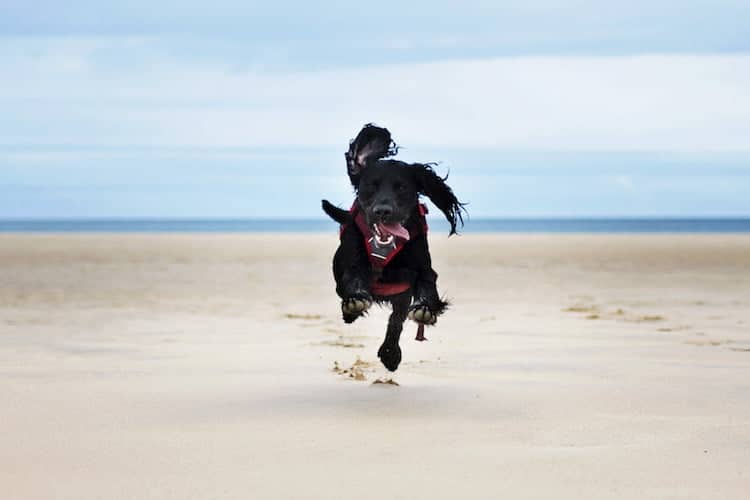
6. Let Dogs be Dogs
My best-loved photographs of Woody are the ones where he’s being his crazy spaniel self. While he’s great at posing and showing off his tricks to the camera, it’s important to remember he’s still a dog.
I make sure to give him plenty of time to run and explore at his own pace between posed, pre-planned photos. Giving him time to be a dog makes for some stunning candid shots!
Have you adopted a black dog? We’d love to see your photos and hear about the joy they bring to your life.
Tag us in your photos on Twitter and Instagram – we’re @thepawpostuk.
And on October 1st, we’ll be asking you to share snaps of your pups on our Facebook page www.facebook.com/ThePawPostUK
If you’re interested in reading about rescue dogs, you might enjoy Can you help Liz from Beds For Bullies find a new home or How Jeff Dunkley is helping Zante Strays.

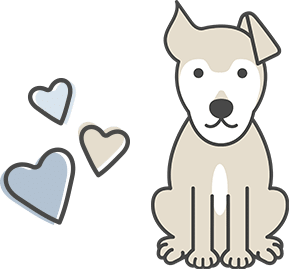
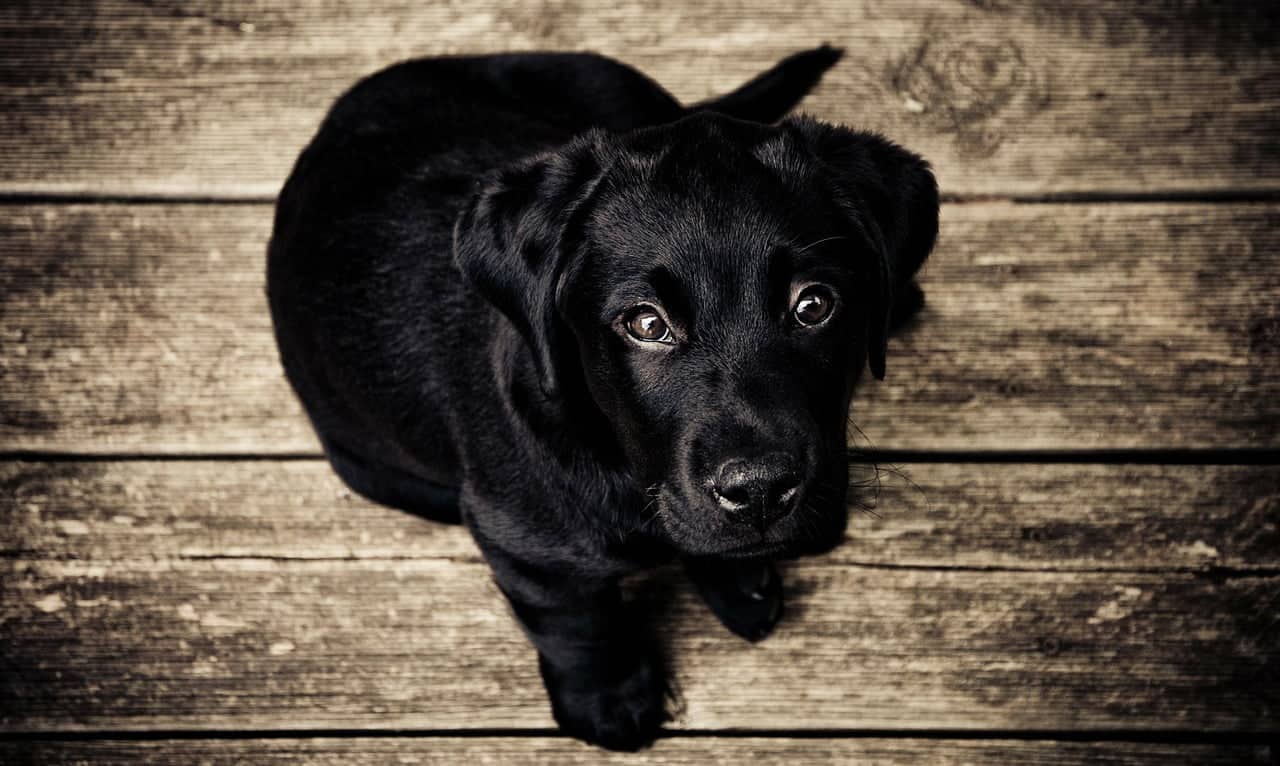

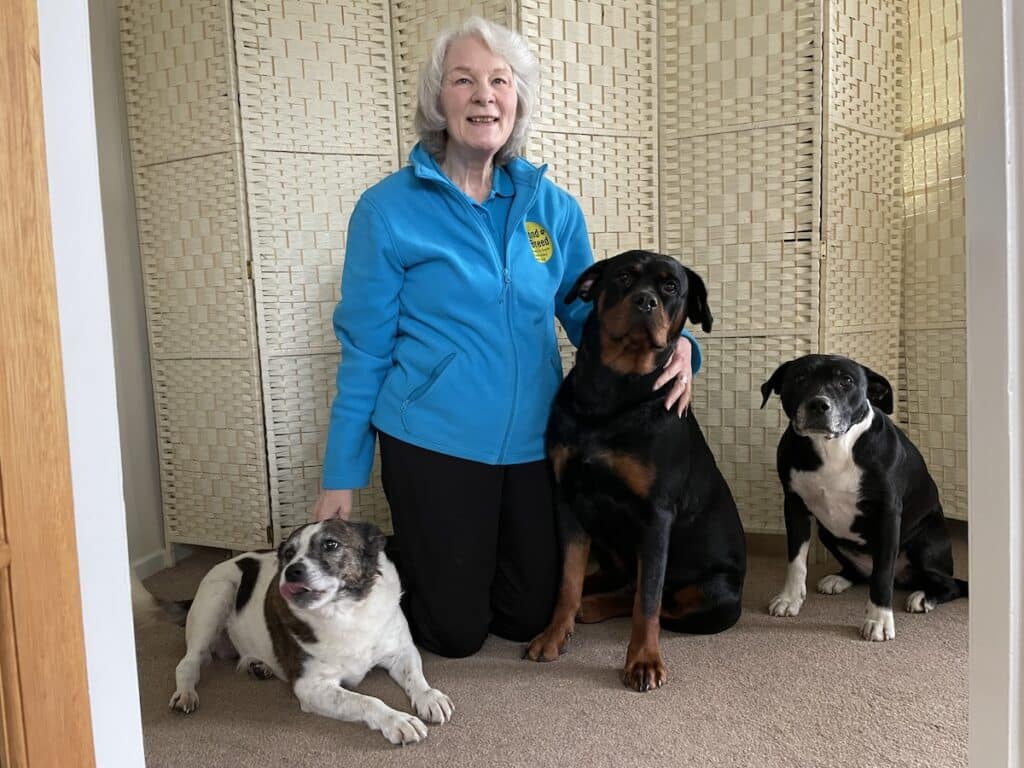
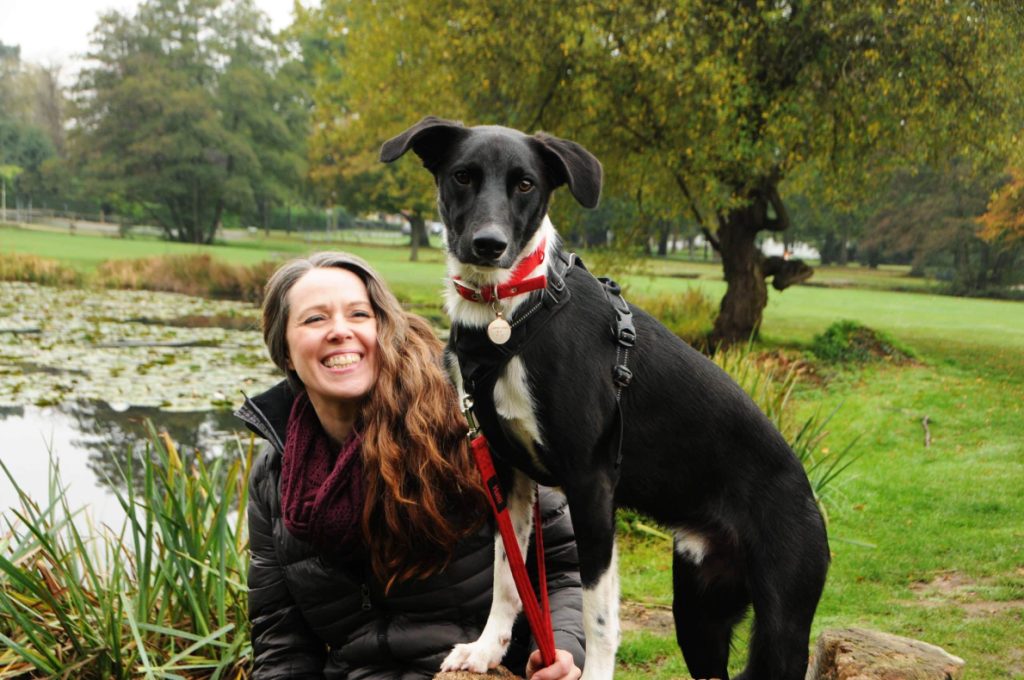
2 Responses
I love this being spoken about as I never thought it was a thing until having my walk around with Dogs Trust last year. I think black dogs are lovely, and I never thought colour would be an issue with dogs, and I always think they have some awesome personalities.
Also, as an owner of a very popular black dog, I love talking about this as so many people so how hard it is, but I know Lily always looks pawfect! Lily gets questioned so so much about how pretty she is and about her breeder etc.
I totally agree Steph, and Lily is a beautiful dog, I can totally see why she has so much interest and your photos of her are always stunning. My first family pet Charlie was a black Cocker Spaniel with a little bit of white on his front. He was such a lovely dog and it just doesn’t seem to make any sense that colour of fur might put people off. The Instagram/photo thing is just bizarre too isn’t it? Thanks so much for commenting and I’m really pleased at how many people have responded to this. I do hope it makes people think especially when thinking of adopting and visiting dog’s homes.